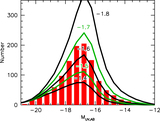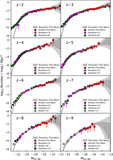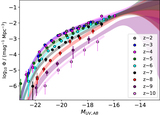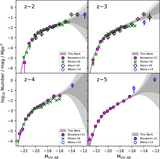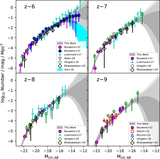Image Details
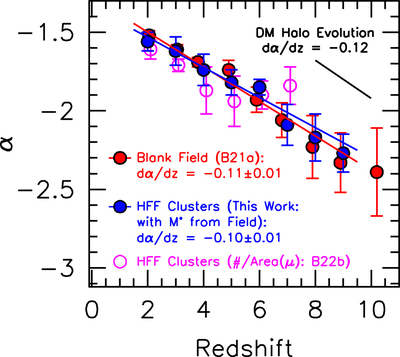
Caption: Figure 3.
Comparison of faint-end slope α determinations from lensed HFF galaxy samples (blue solid circles) with similar blank-field determinations of these slopes α (red solid circles; Bouwens et al. 2021a). The faint-end slope determinations shown here from the lensed HFF samples do not make use of any information from the blank-field search results, except for the value of characteristic luminosity M* (Section 3.3.1; but see Figure 6, Table 2, and Section 3.3.2 for α determinations using both the lensed HFF + blank-field constraints). The purple open circles are based on the surface density Σ vs. magnification μ trend found in the companion paper (Bouwens et al. 2022b) for galaxies at z ∼ 2, 3, 4, 5, 6, and 7. The blue and red lines show the essentially identical, and remarkable, best-fit evolution in the faint-end slope α from the lensing-cluster and blank-field search results, respectively. This strongly suggests that there are minimal systematic errors in either determination, and that we can combine both probes to dramatically improve the statistical constraints on the evolution of the UV LF and faint-end slope α. This is the first time such agreement in the faint-end slope α evolution has been demonstrated over such a large range in redshift.
Copyright and Terms & Conditions
© 2022. The Author(s). Published by the American Astronomical Society.



